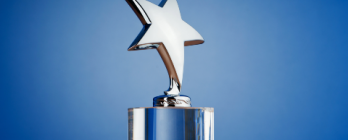Super Lawyers Honors 2025 Kotz Sangster Attorneys

Kotz Sangster is pleased to announce the recognition of our attorneys as 2025 Michigan Super Lawyers and Rising Stars.


On March 18, 2020, President Trump signed the Families First Coronavirus Response Act. It goes into effect on April 2, 2020 and will remain in effect until December 31, 2020. There are two relevant components to this Act: the Emergency Family and Medical Leave Expansion Act and the Emergency Paid Sick Leave Act. Both cover employers with fewer than 500 employees. For more detailed information, refer to the Department of Labor “Employer Paid Leave Requirements” here.
Provides 12 weeks of paid, job-protected leave for employees who are unable to work or telework so that they can care for their children if schools or child care provider is closed due to a public health emergency, i.e., COVID-19. This is the only qualifying reason for which an employee may use Emergency FMLA.
Employees are eligible for this leave if they have been working for the employer for at least 30 calendar days.
The first 10 days of leave are unpaid. Employees may use any accrued paid leave offered by their employer during the first 10 days, but an employer cannot require that the employee do so.
After the first 10 days, employees will be paid at two-thirds the employee’s regular rate of pay, but is capped at $200 per day and $10,000 in the aggregate.
Employees who are healthcare providers or emergency responders are excluded. Note that the Act does not define these terms.
Employers with 25 or more employees have the same reinstatement obligations for employees, i.e., to the same or equivalent position upon return to work. Employers with fewer than 25 employees are generally excluded from this requirement if the position no longer exists due to economic conditions or operational changes that are made because of the public health emergency.
The Department of Labor may exempt small business with fewer than 50 employees.
For a more visual representation, please review the PAID LEAVE OVERVIEW TABLE here.
Affected employers are to receive a corresponding tax credit for providing paid family leave to employees. Employers filing their required federal returns will receive a refundable tax credit from the federal government.
Businesses are to receive 100% of the qualified sick/family leave wages paid, including employer-paid health plan premiums plus the Employer Medicare tax.
Paid Sick Leave and Paid Family and Medical Leave Payments are wages but exempt from employer Social Security taxes.
The tax credits will require the filing of IRS Form 941 and regulations to clarify various exemptions. There are various caps on pay and exemptions which need to be navigated. When additional guidance is provided, this information will be updated.